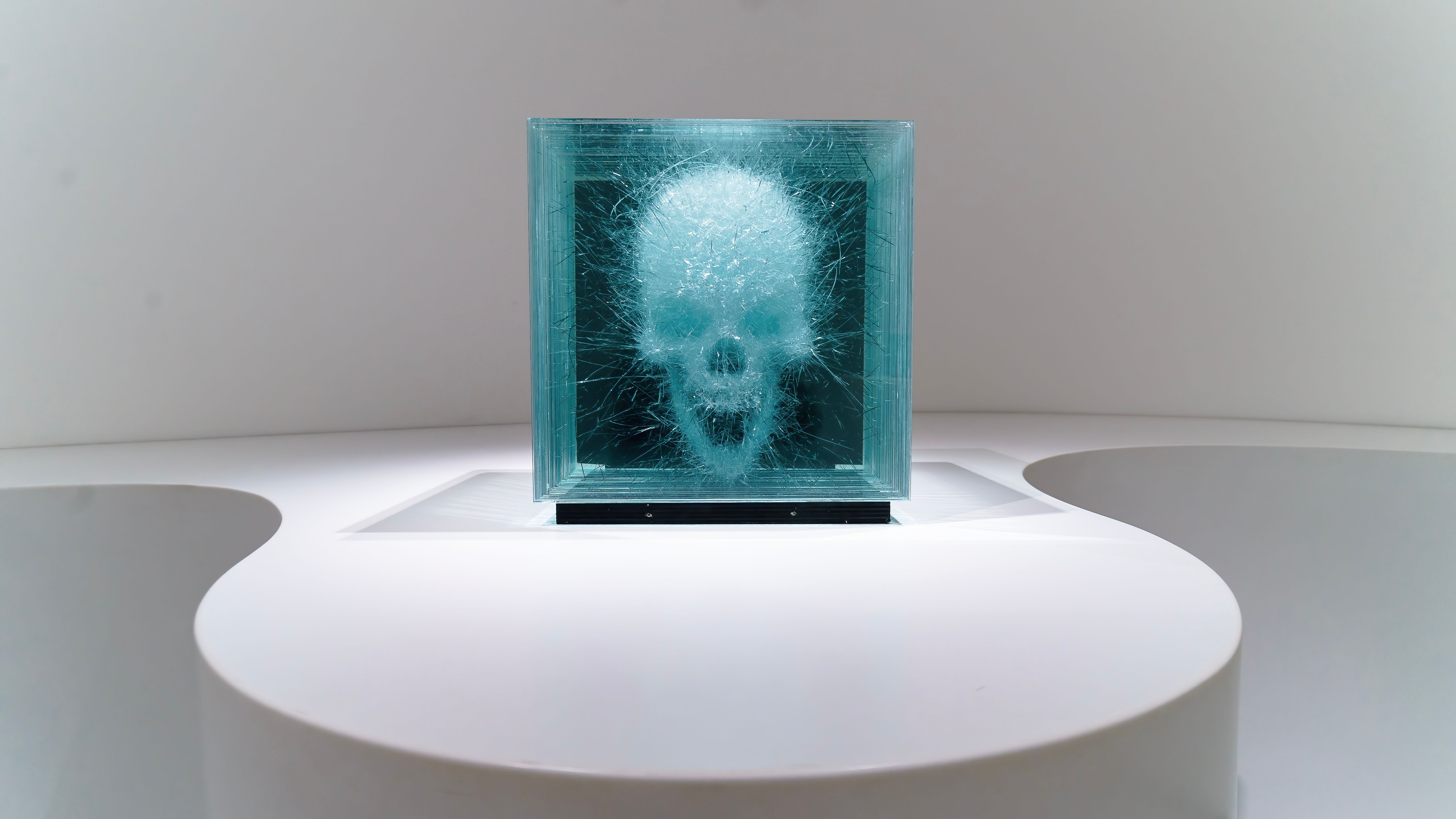Visionary, unconventional, and evocative—these attributes define Simon Berger’s work. He has revolutionised artistic expression with his unique "glass incision" technique. By transforming the act of breaking glass into a creative process, he juxtaposes destruction with creation, crafting profound portraits. His work goes beyond traditional boundaries, challenging conventional aesthetics and redefining the concept of beauty through shattered yet meticulously controlled glass. Berger’s creative process is a blend of precision and unpredictability, requiring a deep understanding of the material’s nature. Each impact on the glass is calculated, yet the resulting cracks introduce an element of randomness that brings his art to life. This duality—harnessing chaos to create order—embodies his innovative approach and sets his work apart in the art world. Simon Berger continues to push the limits of his medium, constantly exploring new techniques and narratives.
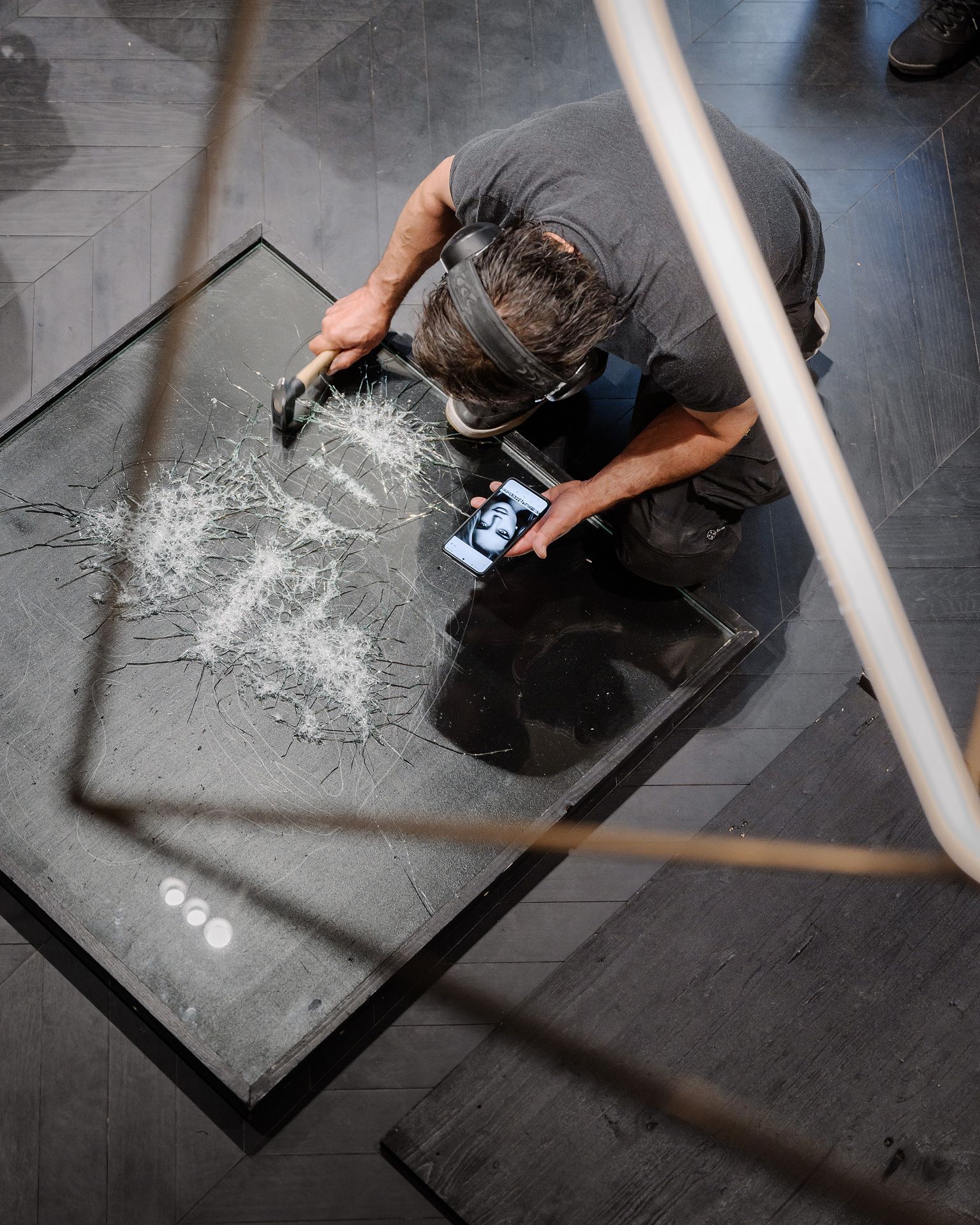
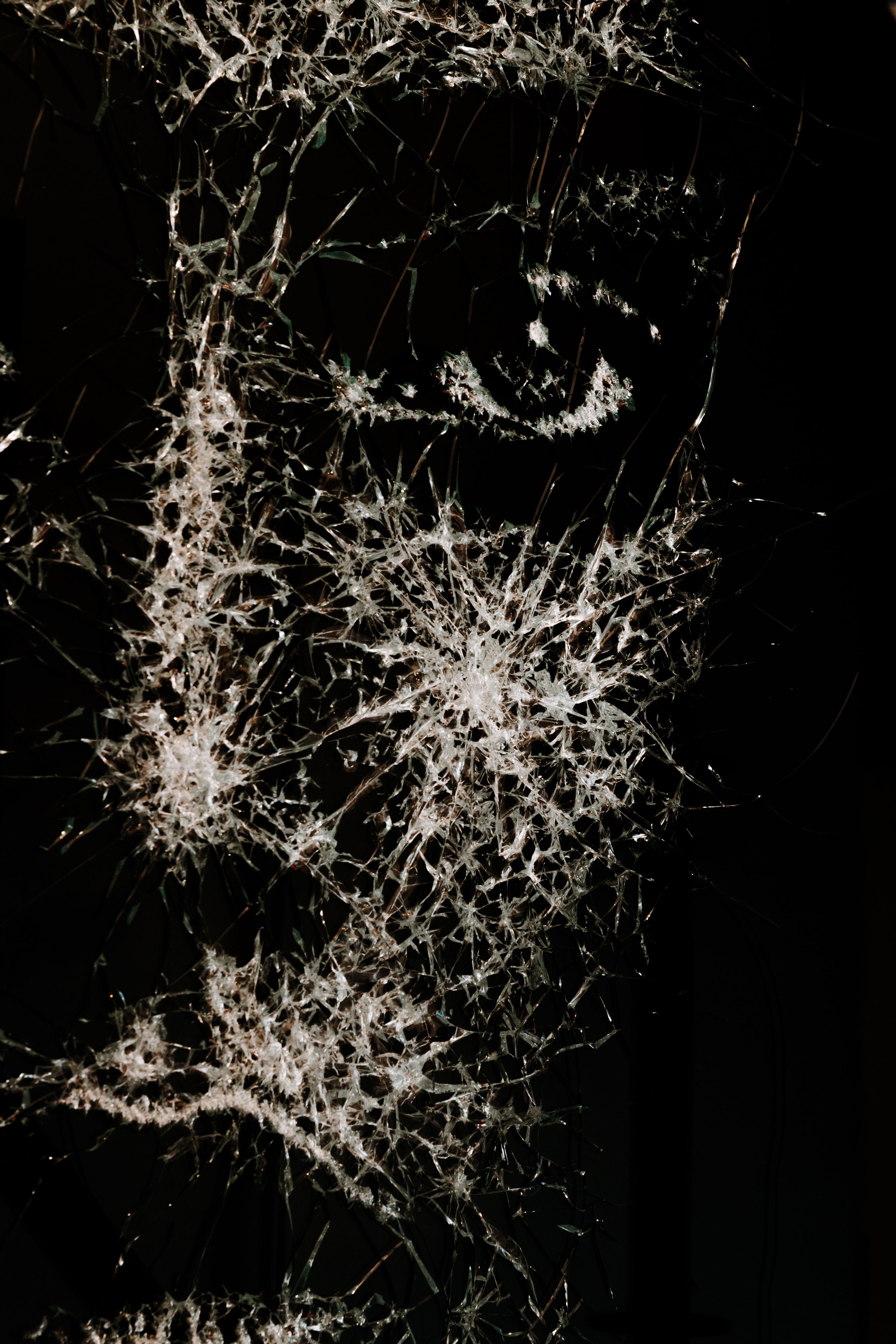
Simon, could you share with us the journey that led you into the world of art and creativity?
One of the first pieces of art I made was a gift for my wife. At the time I was experimenting with spray paint, which I used to create a portrait of her. Seeing the joy in her eyes when she received it touched me deeply. Her appreciation of the painting was an eye-opening moment, as her emotional reaction was a rather unexpected and truly unique experience for me. It was then that I realised that I wanted to pursue a career as an artist. To be able to create something that moves people is one of the reasons why I continue to explore and try out new techniques and materials. I was trained as a carpenter, so I was used to working with my hands and had a good knowledge of materials. After this first piece of art with spray cans, I experimented with metal, wood etc. until I created my first piece of art with glass. It was the first time that a material completely captured my fascination and since then I've been on a constant journey to explore this mesmerising material.
How would you describe the moment when you discovered your unique technique of "glass incision"? Was there a particular experience or inspiration that led you to this method of work? And how do you believe glass gives these artworks something that other materials could not?
There was actually a clear moment that led me to create glass art. It was a few years ago and I was working on an art project with some colleagues in Berlin. I was in the process of working on this particular piece of art on site, and I remember being very irritated with the visual appearance of my work. No matter how hard I tried, I just wasn't getting it right. I was completely frustrated and disappointed, and as I lay in bed that night, my mind went around and around. I just thought there must be a way to create something that was fascinating, new, and doable at the same time. The idea of creating images by breaking glass came to me. When I left Berlin a few days later, I was so excited to get back to my studio to see if this idea was even feasible. Luckily it was, and here we are. This situation really felt like the saying "necessity is the mother of invention". It was through my desperation that I came up with this idea that I am so grateful for. I had been creating artwork for 6-7 years at the time but had never really found my niche. I was known regionally, but I was always striving for more. This one idea really changed my art, my career and life in general as well. One of the fascinating aspects of glass is the transparent appearance of the material - in my work I can only bring out the motifs through impact. Also, the tension of using force to create a work of art is embedded in the work itself.
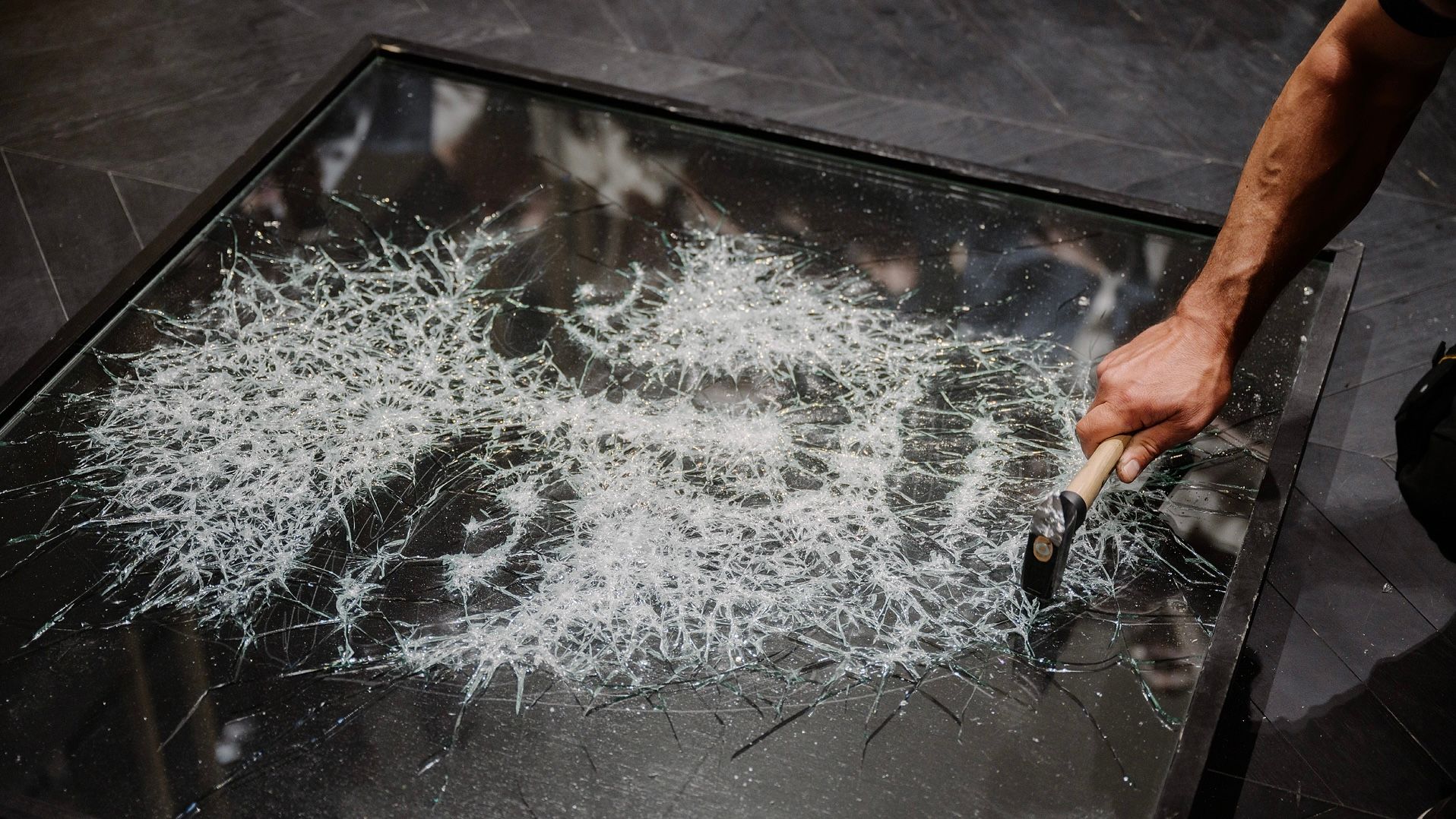
Your works often explore the concept of destruction and creation. How do you perceive this duality reflected in your work and in the way you transform the act of "breaking" glass into a creative endeavour?
This concept is intrinsically linked within the technique itself. Of course I was also interested in this dichotomy, but I think in my mind I went deeper into the question, not necessarily focusing on destruction and creation, but also questioning the ways of seeing and perceiving.
Your technique appears to require great precision and control; however, there can also be an element of unpredictability in the cracks that form. How do you balance your artistic vision with the "random" nature of the glass incision process?
Well, it really took me years to understand the laws of how glass breaks. Like any other artist, a painter for example, it takes trial and error, happy and frustrating accidents, to really discover how to work with the material. I think this might actually be an important idea for me: Instead of just 'using' the material to create, and superimposing all my will on it, it has a strong will of its own. I must respect certain limits. If I hit a glass pane too hard and without control, the glass will break differently than if I hit it more lightly. In the beginning, I was subject to the nature of the glass, and only by getting to know it deeply have I now reached the point where I can use these subtleties to create the breaks I want. Even though I know how glass reacts, I am still sometimes surprised by how perfect a break will turn out to be.
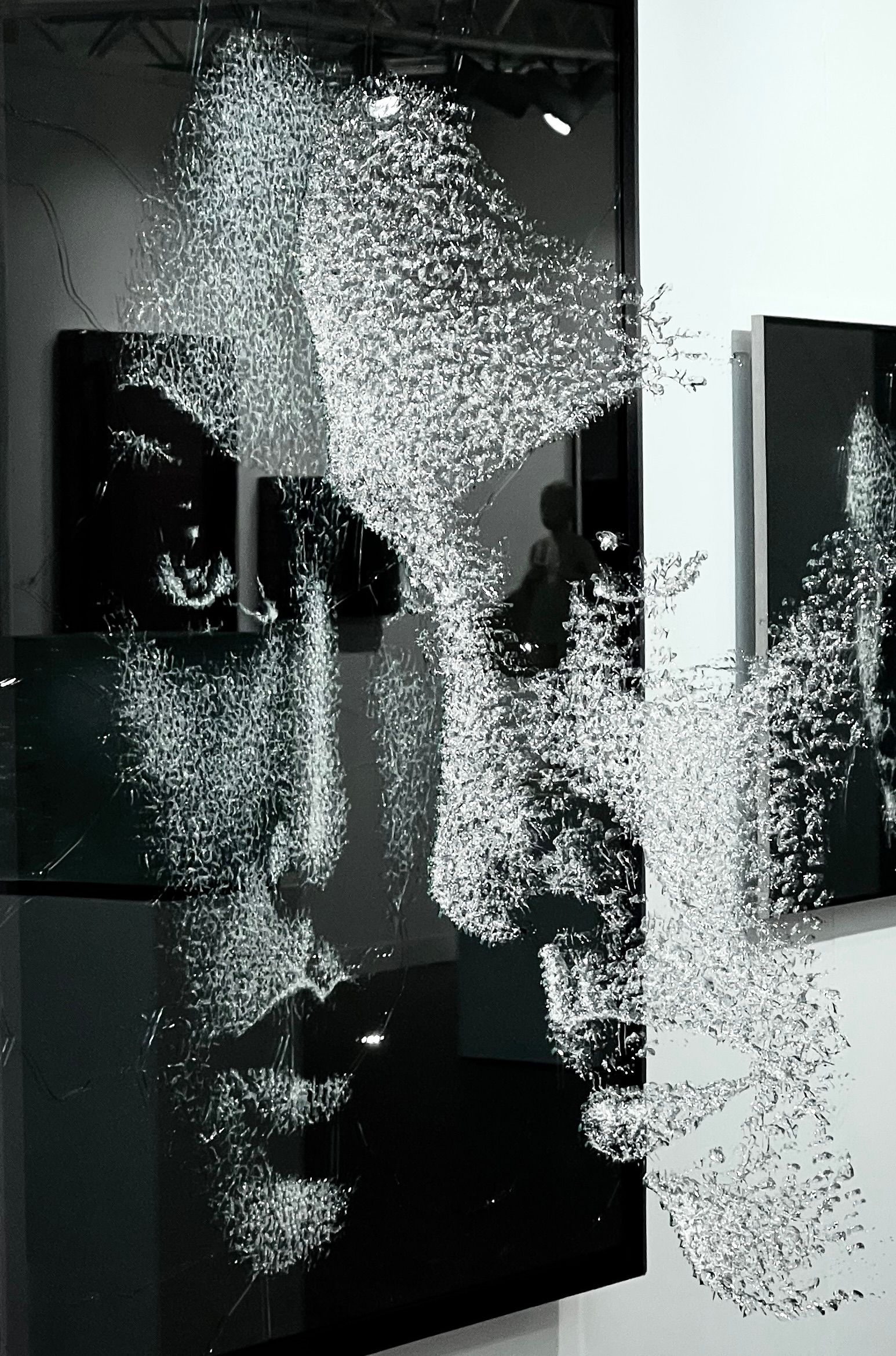
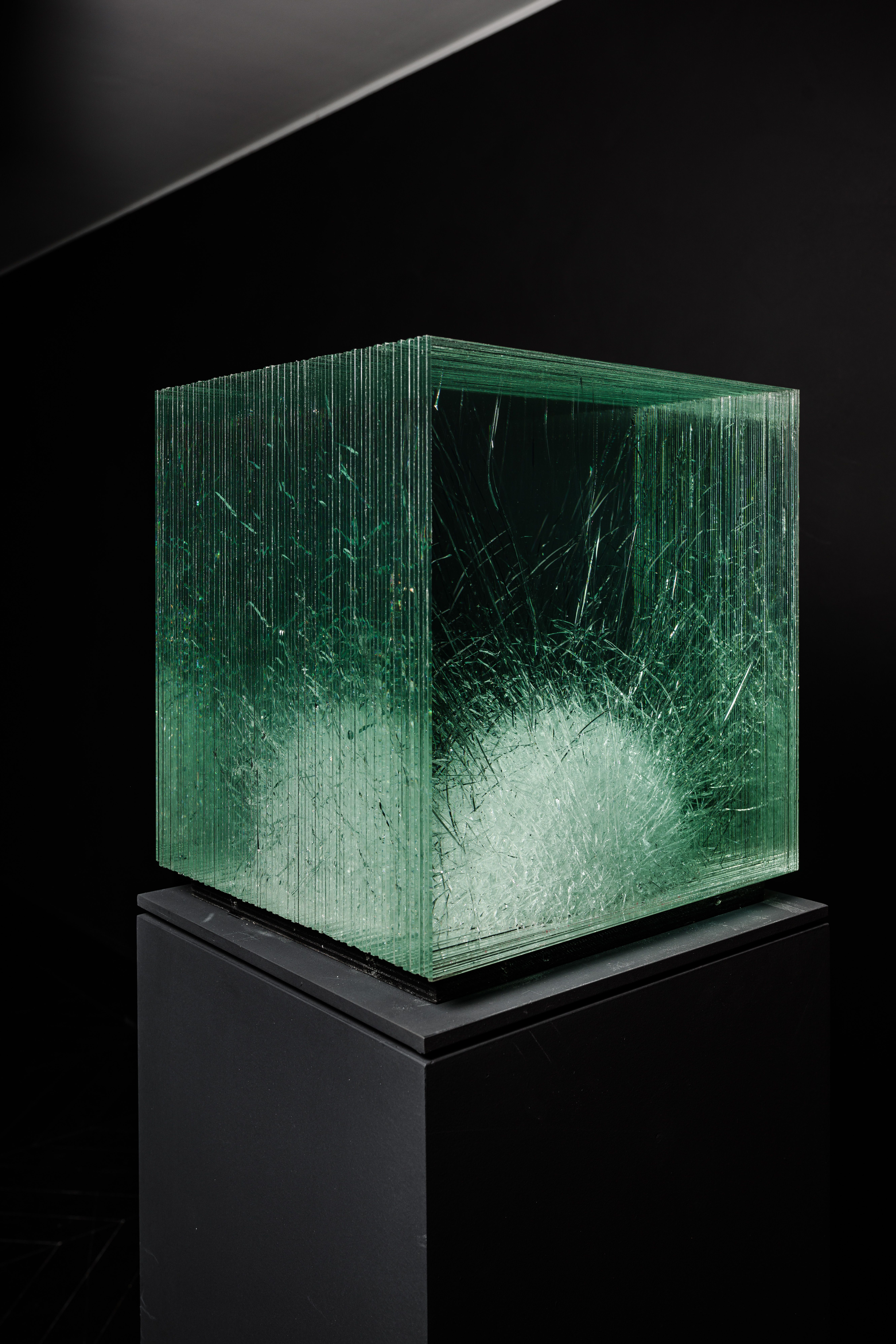
Celebrating faces is at the heart of your art. What motivated this focus, and how do you decide on the subjects for your artwork? Do you exclusively depict real individuals, and if so, what draws you to capture their essence?
Many years ago, I remember seeing a portrait painted by a French artist. Looking at it, I noticed how intensely it captured my eyes - the way a portrait could convey so much depth and emotion through human features blew me away. This is one of the reasons I continue to work with portraiture in my art. When I started to show my work internationally, I realised how universal the subject of portraiture is - the human face is almost like a non-verbal global language that most people can understand. So I think portraiture in general is an art form that is very accessible. Portraiture has been around for a long time, and I believe it is going to continue to be explored for much longer. Sometimes portraiture is brushed aside as an over-explored subject, but I had an interesting experience that proved me otherwise. At my solo exhibition at the Aurum Gallery in Bangkok, I noticed that my portraits looked different depending on the day. They were a reflection of my own mood and state of mind. In a way, a portrait is also a mirror that provides an opportunity for self-reflection. When choosing a subject, I always look for a face that fascinates me. For their beauty, their characteristic facial features, but also for the personal stories that these people can tell. In recent years I have discovered an interest in more 'site-specific' work. For larger exhibitions abroad, I try to focus on a theme that is locally embedded. This allows me to tell unique stories about people who, in one way or another, have influenced the place where I am showing my work.
Simon, can you describe a moment in your career that you consider a turning point?
In a way, my career feels like a very linear progression. Of course, there have been some projects that have had a big influence on my future work, but I don't think I've ever had a "turning point" - fortunately! In my opinion, this steady progression has also been ideal for my artistic development, I have always been able to grow at the same pace as the projects I have been able to realise. However, one of the projects that has had an impact on the way I work is the project that I did to commemorate the people who passed away in the explosion in Beirut. Through the help of the organisers of the project, I was able to meet the families of the deceased. I was encouraged to continue working in this way because of the personal connection I was able to make and the knowledge that my art was supporting a good cause.
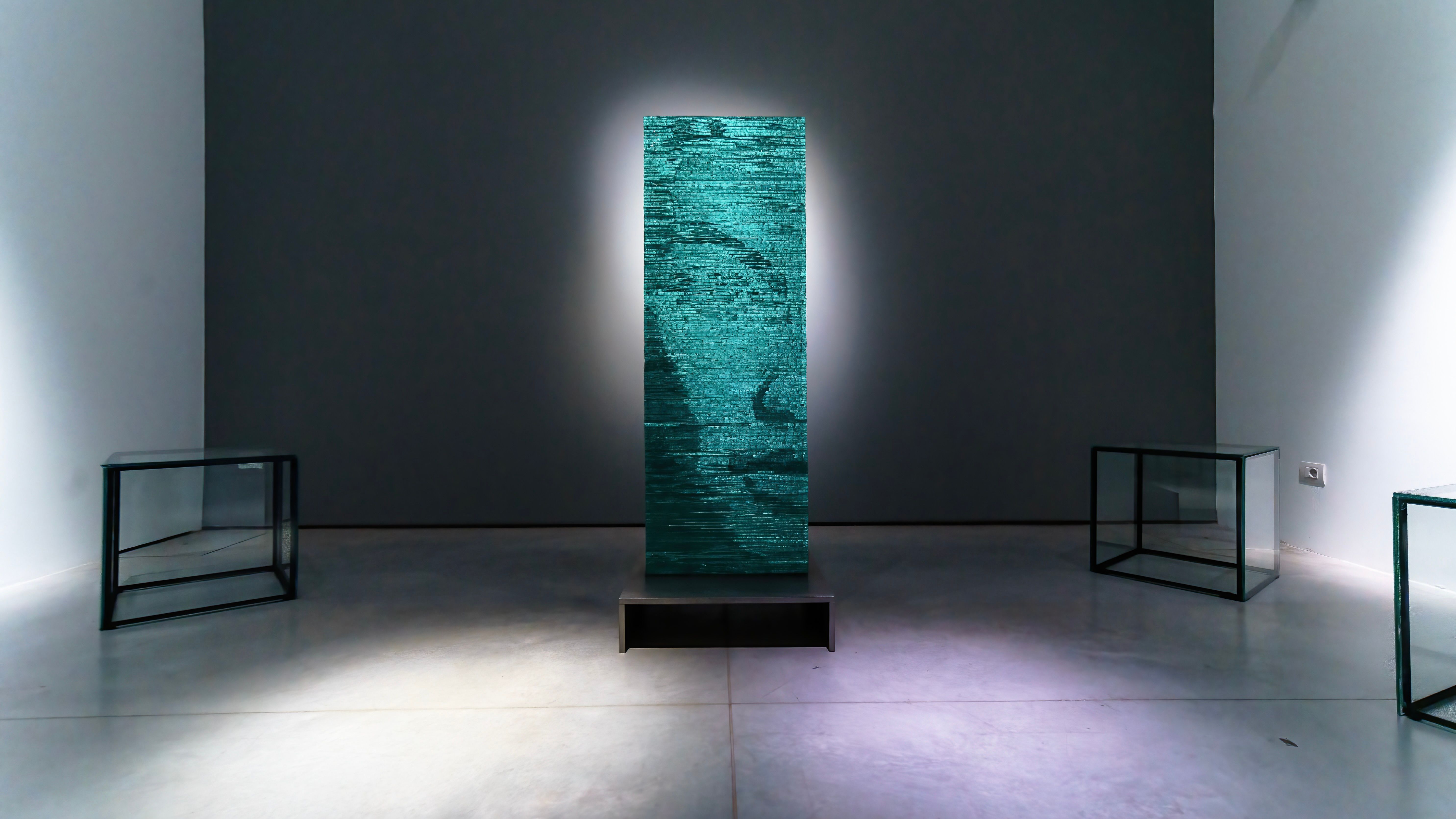
As an artist, your portrayal of fractured faces emerging from glass challenges conventional notions of beauty and perfection. How do you personally interpret the concept of beauty within these shattered visages, and how does this interpretation challenge traditional stereotypes associated with aesthetic perfection?
We humans always try to grasp and judge someone at first glance, but such prejudices can of course also be dangerous. This friction between beauty and damage allows me to address and appeal to the viewer, to take the time to listen to other people's stories. Because everyone has their baggage, not all that glitters is gold. Using these shattered-glass portraits really visualize this depth in each human, and the coexistence of beauty and destruction. Personally, I believe my art rather challenges the art world’s assessment of beauty in art. Aesthetics also influence my work, I like to create atmosphere and depict beautiful things and beautiful people - whether they are subject to the more stereotypical 'beauty' or whether it comes from their characteristic and unique facial features. Beauty as a subject is often frowned upon in art discourse, and some of my work raises the question: is meaningful art not allowed to be beautiful – and is beautiful art not meaningful? I have also realised that what is demanded of art changes quickly. Ten years ago, I received different feedback on what was apparently missing in my art than I do now. I realised then that I should stay true to my path. People like beautiful things, but they also like people's stories. There are still so many stories I can tell through portraiture. I want to use this fascination that my work captures to address important narratives. Of course, I will also develop and take on new subjects as well in the future, depending on the project and setting.
Simon, your artistic technique is undeniably “out of the box”, blending tangible mediums with contemporary concepts. With the rise of artificial intelligence impacting various sectors, including art, how do you perceive the role of AI in shaping the future of artistic expression and influencing the authenticity and emotional depth of artworks?
Any new technique or media that can be used for art is generally fascinating and can develop the creativity of society as a whole. As we have seen, there was a lot of hype around AI art, which has now come crashing down a bit. I think that was to be expected. Such tools as artificial intelligence will now be integrated more and more into society and our daily lives to make certain processes easier. But what is interesting is that people still value the real and tangible. For me, it has never been a question of whether AI will replace physical art or not. It will become more and more common to use it within artistic processes as well, and at some point, it will be impossible to imagine life without it. As with other areas of life, AI will eventually find its place in the art world. And, as it develops, I think AI might be able to replicate the emotional depth of artworks, to a certain extent, that we've come to believe only a human can achieve. But that may be a while away.
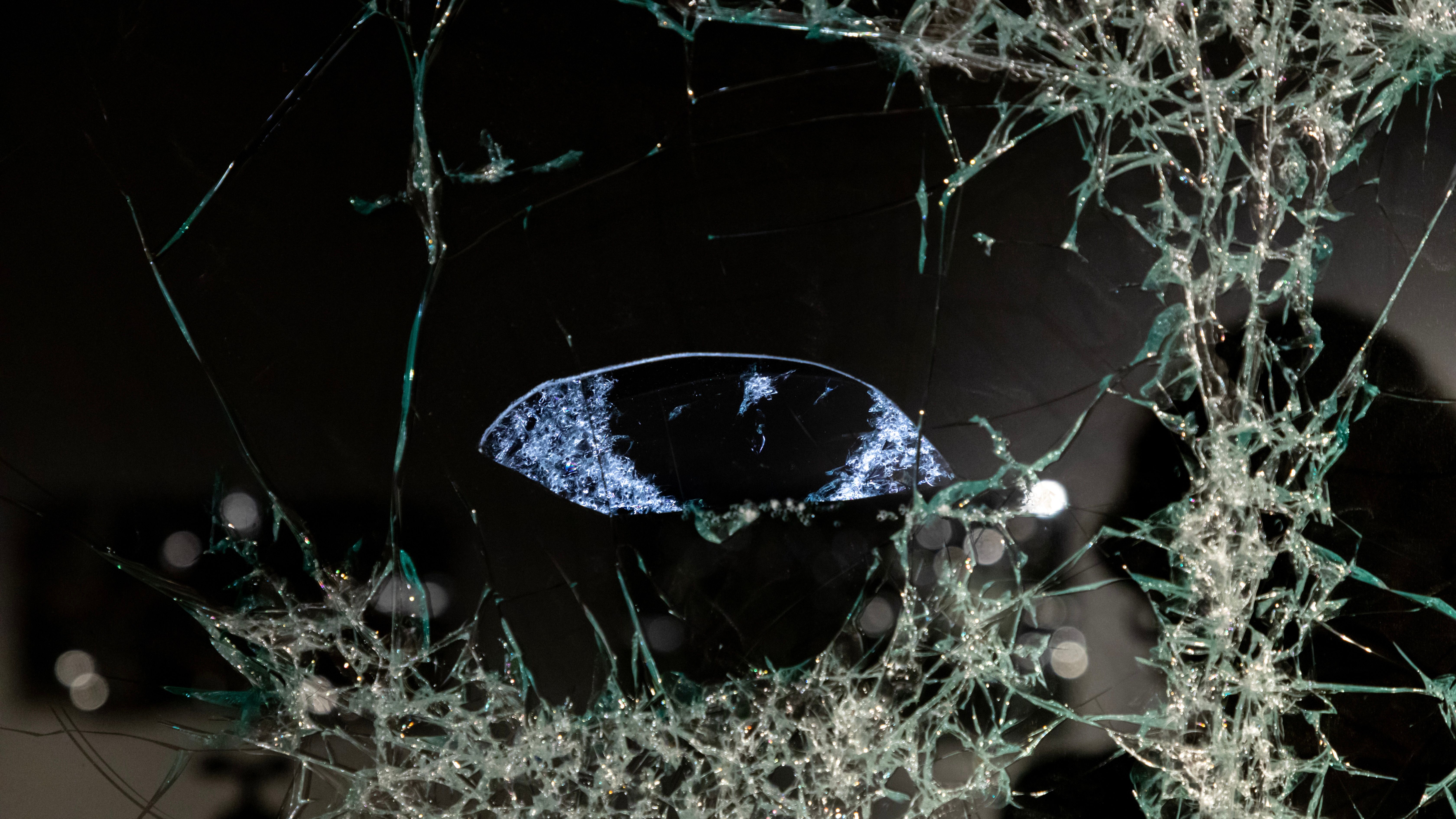
It’s fascinating to see how your work has captivated audiences, especially during one of your most important exhibitions 'Shattering Beauty' at Museo del Vetro in Murano. Could you share with us what it was like to perform live? How did the atmosphere and interaction with the audience influence your creative process and the presentation of your artworks?
It is of course a completely different atmosphere than when I create in my studio. I feel a lot of pressure when I do a live performance, and fortunately I usually work well under pressure. It is a bit nerve-wracking though: If I make a mistake with a portrait in the studio, I can just throw the glass away and start again, but for a live performance I only have one shot. There is no way to "paint over" a mistake if something goes wrong. But fortunately, it has always worked out so far. I definitely need to be in a certain frame of mind when I perform live, but I always prepare well and know what portrait I am going to create before I go out in front of the crowd.
Simon, what lies ahead in your artistic journey?
There are several open doors for projects, including in Asia, for example, where I am in the process of evaluating which ones I would like to realise. I am so thankful for all the opportunities I have had over the past few years to create new projects and do what I love - create art. I am very much looking forward to exploring new ways of creating and to all the inspiring encounters I will have along the way.
